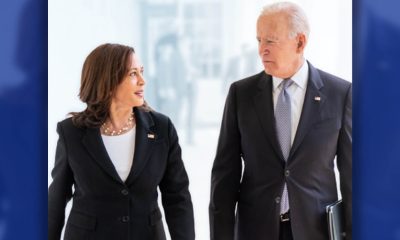National
Baltimore Gets Bloodier as Arrests Drop Post-Freddie Gray

In this May 24, 2015, file photo, police pick up a pair of shoes after a double shooting in Baltimore. Residents in West Baltimore say they’ve been victims of excessive policing in this neighborhood where street crime and drug-dealing have been endemic. Now, one month after riots erupted in the wake of the death of Freddie Gray in police custody, homicides and shootings are up and those same residents feel like they’ve been abandoned and left to fend for themselves. (Colin Campbell/The Baltimore Sun via AP, File)
JULIET LINDERMAN, Associated Press
BALTIMORE (AP) — A 31-year-old woman and a young boy were shot in the head Thursday, becoming Baltimore’s 37th and 38th homicide victims so far this month, the city’s deadliest in 15 years.
Meanwhile, arrests have plunged: Police are booking fewer than half the number of people they pulled off the streets last year.
Arrests were already declining before Freddie Gray died on April 19 of injuries he suffered in police custody, but they dropped sharply thereafter, as his death unleashed protests, riots, the criminal indictment of six officers and a full-on civil rights investigation by the U.S. Justice Department that has officers working under close scrutiny.
“I’m afraid to go outside,” said Antoinette Perrine, whose brother was shot down three weeks ago on a basketball court near her home in the Harlem Park neighborhood of West Baltimore. Ever since, she has barricaded her door and added metal slabs inside her windows to deflect gunfire.
“It’s so bad, people are afraid to let their kids outside,” Perrine said. “People wake up with shots through their windows. Police used to sit on every corner, on the top of the block. These days? They’re nowhere.”
West Baltimore residents worry they’ve been abandoned by the officers they once accused of harassing them, leaving some neighborhoods like the Wild West without a lawman around.
“Before it was over-policing. Now there’s no police,” said Donnail “Dreads” Lee, 34, who lives in the Gilmor Homes, the public housing complex where Gray, 25, was chased down. “People feel as though they can do things and get away with it. I see people walking with guns almost every single day, because they know the police aren’t pulling them up like they used to.”
Police Commissioner Anthony Batts said his officers “are not holding back,” despite encountering dangerous hostility in the Western District.
“Our officers tell me that when officers pull up, they have 30 to 50 people surrounding them at any time,” Batts said.
Batts provided more details at a City Council meeting Wednesday night, saying officers now fear getting arrested for making mistakes.
“What is happening, there is a lot of levels of confusion in the police organization. There are people who have pain, there are people who are hurt, there are people who are frustrated, there are people who are angry,” Batts said. “There are people, and they’ve said this to me, ‘If I get out of my car and make a stop for a reasonable suspicion that leads to probable cause but I make a mistake on it, will I be arrested?’ They pull up to a scene and another officer has done something that they don’t know, it may be illegal, will they be arrested for it? Those are things they are asking.”
Protesters said Gray’s death is emblematic of a pattern of police violence and brutality against impoverished African-Americans in Baltimore. In October, Batts and Mayor Stephanie Rawlings-Blake invited the Justice Department to participate in a collaborative review of police policies. The fallout from Gray’s death prompted the mayor to ramp that up, and U.S. Attorney General Loretta Lynch agreed to a more intensive probe into whether the department employs discriminatory policing, excessive force and unconstitutional searches and arrests.
Baltimore was seeing a slight rise in homicides this year even before Gray’s death April 19. But the 38 homicides so far in May is a major spike, after 22 in April, 15 in March, 13 in February and 23 in January.
With one weekend still to go, May 2015 is already the deadliest month in 15 years, surpassing the November 1999 total of 36.
Ten of May’s homicides happened in the Western District, which has had as many homicides in the first five months of this year as it did all of last year.
Non-fatal shootings are spiking as well — 91 so far in May, 58 of them in the Western District.
The mayor said her office is “examining” the relationship between the homicide spike and the dwindling arrest rate.
Even before Gray’s death, police were making between 25 and 28 percent fewer arrests each month than they made in the same month last year. But so far in May, arrests are down roughly 56 percent. Police booked just 1,045 people in the first 19 days of May, an average of 55 a day. In the same time period last year, police arrested 2,396 people, an average of 126 a day.
In fact, police did not make any arrests in the triple digits between April 22 and May 19, except on two occasions: On April 27, when protests gave way to rioting, police arrested 246 people. On May 2, the last day of a city-wide curfew, police booked 140 people.
At a news conference Wednesday, Rawlings-Blake said there are “a lot of reasons why we’re having a surge in violence.”
“Other cities that have experienced police officers accused or indicted of crimes, there’s a lot of distrust and a community breakdown,” Rawlings-Blake said. “The result is routinely increased violence.”
“It’s clear that the relationship between the commissioner and the rank-and-file is strained,” she added. “He’s working very hard to repair that relationship.”
Emergency response specialist Michael Greenberger cautions against directly blaming police. The founder and director of the University of Maryland Center for Health and Homeland Security, the spike in homicides is more likely a response to Gray’s death and the rioting.
“We went through a period of such intense anger that the murder rate got out of control. I think it’s been really hard for the police to keep on top of that,” he said.
Lee disagrees. He says rival gang members are taking advantage of the police reticence to settle old scores.
“There was a shooting down the street, and the man was standing in the middle of the street with a gun, just shooting,” Lee added. “Usually, you can’t walk up and down the street drinking or smoking weed. Now, people are everywhere smoking weed, and police just ride by, look at you, and keep going. There used to be police on every corner. I don’t think they’ll be back this summer.”
Batts acknowledged that “the service we’re giving is off-target with the community as a whole” and he promised to pay special attention to the Western District.
Veronica Edmonds, a 26-year-old mother of seven in the Gilmor Homes, said she wishes the police would return, and focus on violent crime rather than minor drug offenses.
“If they focused more on criminals and left the petty stuff alone, the community would have more respect for police officers,” she said.
Copyright 2015 The Associated Press. All rights reserved. This material may not be published, broadcast, rewritten or redistributed.
Black History
Martial Artist Victor Moore: An American Karate and Kickboxing Pioneer
Throughout his career, Moore defeated many national champions, including Joe Lewis, Mike Stone, and Bill “Superfoot” Wallace. Moore placed in every tournament he competed in from 1965 until his retirement in 1975, defeating renowned national champions such as Mike Foster, Chuck Norris, Fred Wren, Glenn Keeney, James Hawkes, and Jim Kelly. Moore emphasizes that winning or losing does not diminish a champion’s credibility — they are all champions in his eyes.

By Tamara Shiloh
Victor Moore, born on Aug. 23, 1943, holds a 10th-degree Black Belt in Karate and is a four-time world karate champion.
As one of the chief instructors under Robert Trias in the Shuri-ryu Karate system, Moore was also among the first ten members of the Trias International Society. Over his 50-year martial arts career, he trained in various styles, including Chito-ryu with William J. Dometrich, Judo, Kempo, and Bondo karate.
Moore began his martial arts journey at the age of 7 in Cincinnati, lifting weights and reading Charles Atlas books to guide his training. By age 9, he had learned the basics of jujitsu and judo, and at 12, he began training in Kempo karate under Ronald Williams, who awarded him his first black belt after five years of instruction.
In 1961, Moore expanded his training by joining a judo school led by Ray Hughes and later trained in Gyu Ryu-karate under Harvey Eubanks. He studied Kempo with Bill Dometrich and continued exploring different karate styles. Instructors at the time, required students to start as white belts in each new style, even if they held black belts elsewhere, which shaped Moore’s adaptability.
Chung Ling, an exchange student from China, introduced Moore and others to Chuan Fa, enhancing Moore’s understanding of martial arts. He also took up judo at a school in Cincinnati, where he earned his brown belt, and trained in karate with Jim Wax, who had studied under the Shimabuku brothers. Moore’s toughness was further honed by his boxing experience at the 9th Street YMCA, where he became a sparring partner for Tiger Joe Harris.
At Central State University, Professor Barry Yasuto trained Moore in Shotokan karate, but Moore was denied entry to the Japanese Karate Association, possibly due to his race. After returning to Cincinnati, Moore opened his first karate school and began competing in national tournaments. He traveled across the U.S., eventually meeting Robert Trias, who became his mentor and helped him rise to the second-degree black belt level. Under Trias, Moore continued training in Kempo and Goju-Ryu styles.
Moore also trained under Dr. Maung Gyi, learning Bondo karate, stick fighting, and kickboxing. In 1973, Moore and Joe Lewis introduced kickboxing to America on the Merv Griffin TV show. Moore competed in the first kickboxing tournament in the U.S., facing Jim Harrison in a historic fight.
Throughout his career, Moore defeated many national champions, including Joe Lewis, Mike Stone, and Bill “Superfoot” Wallace. Moore placed in every tournament he competed in from 1965 until his retirement in 1975, defeating renowned national champions such as Mike Foster, Chuck Norris, Fred Wren, Glenn Keeney, James Hawkes, and Jim Kelly. Moore emphasizes that winning or losing does not diminish a champion’s credibility — they are all champions in his eyes.
Moore continues to teach martial arts, working with instructors and students nationwide. His daughters, Vickie and Vonnie, and his son, Vanceston, also train under his guidance.
Activism
Atty Gen Bonta: U.S. Law Mandating Emergency Care to All Patients Faces Threats
The attorney general highlighted that EMTALA is vital for ensuring that no individual is turned away from emergency services based on financial status or insurance coverage. Bonta stated that the law has been a cornerstone of emergency healthcare for decades, providing peace of mind to millions of Americans who might otherwise hesitate to seek urgent medical attention due to cost concerns.

By Bo Tefu, California Black Media
California Attorney General Rob Bonta emphasized the critical need to protect the Emergency Medical Treatment and Labor Act (EMTALA), mandating that hospitals provide emergency care to all patients regardless of their ability to pay.
In a recent statement, Bonta highlighted the potential threats to this essential legislation amid ongoing discussions about healthcare accessibility in the U.S.
“EMTALA ensures that no one is denied access to emergency medical care, including abortion care, and this federal law is more imperative than ever following the overturn of Roe v. Wade,” said Bonta.
The attorney general highlighted that EMTALA is vital for ensuring that no individual is turned away from emergency services based on financial status or insurance coverage. Bonta stated that the law has been a cornerstone of emergency healthcare for decades, providing peace of mind to millions of Americans who might otherwise hesitate to seek urgent medical attention due to cost concerns.
This decision to support the federal government’s case comes at a time when many healthcare providers are facing pressure from rising costs and legislative changes that could undermine existing protections. Bonta called on lawmakers to reinforce EMTALA’s provisions and to combat any efforts aimed at weakening the act, asserting that equitable access to emergency care is a fundamental right.
He urged state and federal governments to ensure that all Americans, particularly marginalized communities, have the necessary access to emergency services without fear of financial repercussions. The brief indicates the coalition’s commitment to healthcare equity, emphasizing that maintaining strong protections under EMTALA is crucial for safeguarding public health.
As discussions around healthcare policy continue, Bonta remains steadfast in promoting initiatives that protect emergency care access, asserting that everyone deserves timely and appropriate medical treatment in emergencies. His efforts align with ongoing legal and advocacy battles to preserve the rights established by EMTALA in the face of evolving healthcare challenges.
#NNPA BlackPress
Why Not Voting Could Deprioritize Black Communities
NNPA NEWSWIRE — President Biden’s Justice40 initiative. This executive order ensures that 40% of federal investment benefits flow to disadvantaged communities, addressing deep-seated inequities.
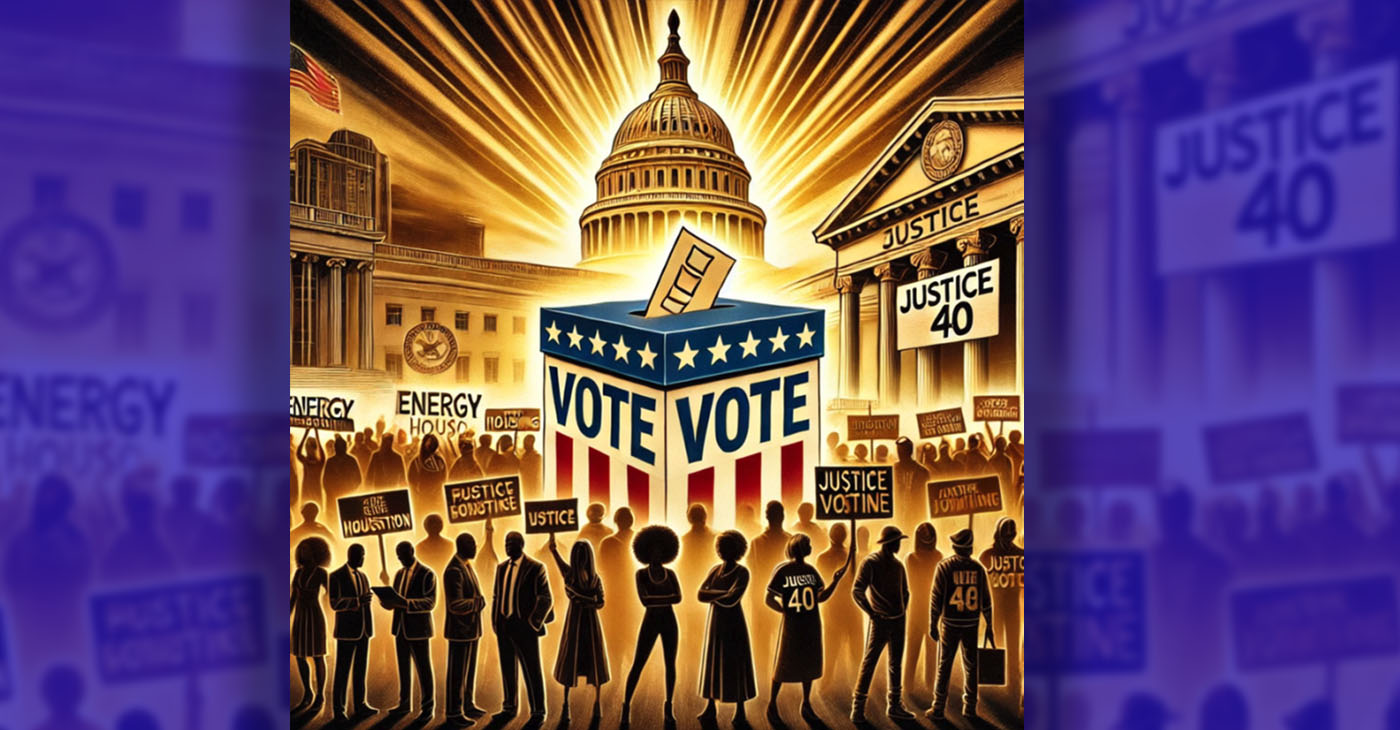
By Anthony Kinslow II, PhD
For generations, Black communities have been systematically denied the resources and opportunities provided to other American communities. Justice40 is more than a Biden-Harris initiative — it ensures a financial commitment to restore communities from historical inequities and bring lasting investment where needed most. It doesn’t matter if you don’t love Vice President Kamala Harris, are skeptical about her policies, or dislike her background as a prosecutor. If we want to see the progress and resources for Justice40 communities continue, we need to vote for her. The stakes in this upcoming election go beyond personal feelings and political preferences. A crucial piece of policy that directly impacts Black communities across the country is on the line:
President Biden’s Justice40 initiative. This executive order ensures that 40% of federal investment benefits flow to disadvantaged communities, addressing deep-seated inequities. Because the initiative was instituted via executive order if we don’t have President Kamala Harris in November, the executive order will likely be struck down. Justice40 touches every federal department—housing, education, transportation, energy, environmental protection, and much more. Using a broad range of metrics to define disadvantaged communities, the program is designed to avoid legal challenges while ensuring that many Black communities benefit from these federal investments.
Despite this historic initiative, much of the progress to implement this initiative could be undone by the results of this election. Justice40 is an executive order, and like all executive orders, it can be canceled with the stroke of a pen by the next president. If a Republican administration takes over, there’s every reason to believe this effort will be scrapped, especially with Trump’s explicit desire to reverse Biden’s policies. This is why we must cast our vote. This isn’t just about a candidate– it’s about securing a future where Black communities are finally prioritized.
In a Harris administration or a continued Biden-Harris presidency, we can expect the Justice40 program to grow and be further institutionalized. This progress has already started slowly but surely in departments such as the Department of Energy (DOE), the Department of Transportation (DOT), the Environmental Protection Agency (EPA), and the United States Department of Agriculture (USDA), with leaders working on systemic change. I know Many of our people in these positions working to make meaningful, lasting changes. This is in stark contrast to Trump’s presidency. While government work is always slow, the groundwork is being laid. For this progress to take root and continue benefiting our communities, voting to preserve it is essential. This is our vote to keep federal funds flowing to our neighborhoods.
SO, VOTE! Together, we can ensure that the Justice40 program continues to grow and uplift communities that have been left behind for far too long.
-

 Alameda County1 week ago
Alameda County1 week agoAlameda County District Attorney Pamela Price Announces $7.5 Million Settlement Agreement with Walmart
-
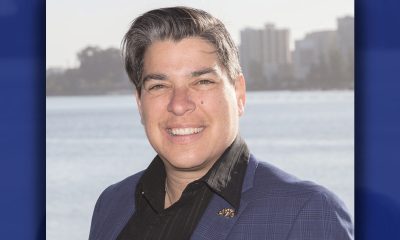
 Activism2 weeks ago
Activism2 weeks agoOP-ED: Hydrogen’s Promise a Path to Cleaner Air and Jobs for Oakland
-
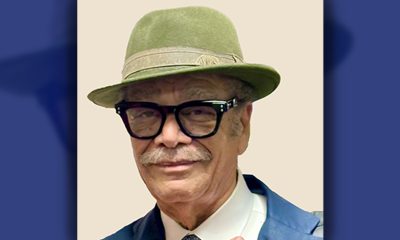
 Activism3 weeks ago
Activism3 weeks agoCOMMENTARY: DA Price Has Done Nothing Wrong; Oppose Her Recall
-

 Activism3 weeks ago
Activism3 weeks agoBarbara Lee, Other Leaders, Urge Voters to Say ‘No’ to Recalls of D.A. Pamela Price, Mayor Sheng Thao
-
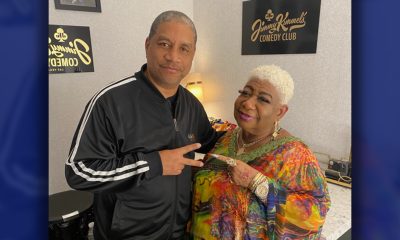
 Community2 weeks ago
Community2 weeks agoTerry T. Backs Oakland Comedy Residency by Oakland’s Luenell at Jimmy Kimmel’s Comedy Club in Las Vegas
-

 Bay Area3 weeks ago
Bay Area3 weeks ago2024 Local Elections: Q&A for Oakland Unified School Candidates, District 3
-

 Activism3 weeks ago
Activism3 weeks agoOakland Post: Week of October 9 – 15, 2024
-

 Business2 weeks ago
Business2 weeks agoStudy Confirms California’s $20/Hour Fast Food Wage Raises Pay Without Job Losses









